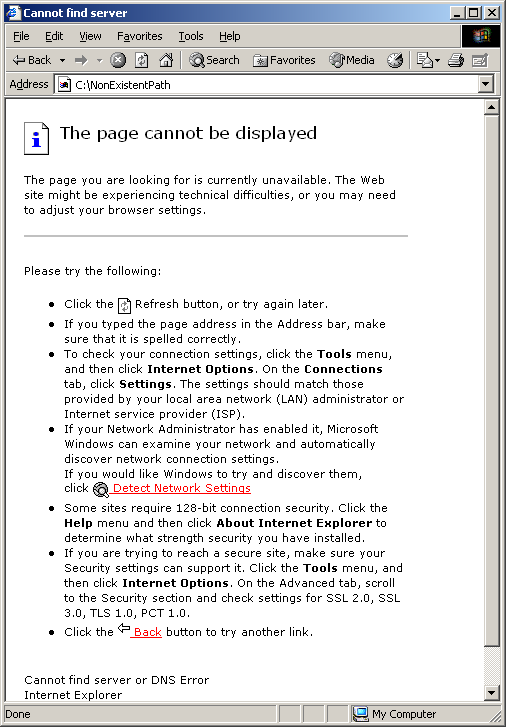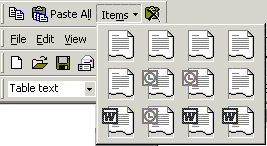 I’ve been discovering just how great PNG is for screendumps. It’s not lossy, yet it compresses particularly well for screendumps off Windows… even when there’s those gradient title bars that have become fashionable over the last couple of years.
I’ve been discovering just how great PNG is for screendumps. It’s not lossy, yet it compresses particularly well for screendumps off Windows… even when there’s those gradient title bars that have become fashionable over the last couple of years.
For instance, the Path Not Found dump out of Windows explorer the other day:
- PNG 22,140 bytes
- JPG (saved out of Photopaint at compression 100 out of 255, noticeable loss of quality in the letters – See right) 76,824 bytes
- GIF (converted to 256 colours, so some colour lost) 22,345 bytes
- GIF (converted to 16 colours, so LOTS of colour lost) 17,285 bytes
Okay, so the 256 colour GIF is only marginally bigger, but to produce it you have to fiddle the colours, and of course it uses the proprietary LZW algorithm for which Unisys once would have wanted all our souls. PNG is just a save, no having to even think about it. Coolness.




 Damn this expanded Office Clipboard that comes with Office 2000, with its extraneous toolbar turning itself on and plonking itself right at the top, screwing up all your menus. Damn its 12 spots which fill up and then interrupt you to tell you they’re full. I don’t care if they’re full. Yes of course I want to copy this and bump some old long-forgotten thing from an hour ago off the list.
Damn this expanded Office Clipboard that comes with Office 2000, with its extraneous toolbar turning itself on and plonking itself right at the top, screwing up all your menus. Damn its 12 spots which fill up and then interrupt you to tell you they’re full. I don’t care if they’re full. Yes of course I want to copy this and bump some old long-forgotten thing from an hour ago off the list.